Sequoias in cooler zones?
In zone 6 I have personally winter killed one S. giganteum, and recently saw another (planted at 14' tall) get removed after a second winter of decline. It looked ratty. I'd have left it but they chain sawed it.
Is there ANYTHING I can do to get them to survive? I have just ordered a few 5 gallon plants, and recently bought a 'glaucum' variety in a 5 gallon pot. I imagine smaller plants may have a better chance of adapting compared to woody b&b's that haven't developed a tough bark.
Would a big dose of pottasium help with hardiness? How about wrapping them for several years to 'harden off'.
So long as they will somehow be capeable of surviving a winter naturally, I'll try anything. Same question for a S. sempervirens.... This tree was planted early spring, has grown over a foot already, looks fantastic... but it can get to -26 celsius for a couple weeks each winter here (I know I wasted the $$) Thanks.
Comments (52)
wbgarden
16 years agoHi, some images of this marvelous trees in Czech republic, Europe, zone 6, sometimes winter temperature - 30 of Celsius.
One of the oldest....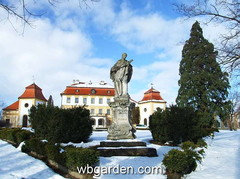
My trees in winter...
{{gwi:672054}}{{gwi:633397}}
Jan wbgardenHere is a link that might be useful: Dwarf conifers garden
kingn8
16 years agoThanks Jan! Great plants.
I'm toying with a few here in a zone 6 and so far all is well after a few winters.
If I am not mistaken aren't our/my summers equally, if not worse than the winter temps?I'll see if I can find a pic or two of some from around here.
Nate
Related Professionals
Roosevelt Landscape Architects & Landscape Designers · Barrington Landscape Contractors · Bound Brook Landscape Contractors · Byram Landscape Contractors · Cockeysville Landscape Contractors · Columbine Landscape Contractors · Dunwoody Landscape Contractors · East Patchogue Landscape Contractors · Gresham Landscape Contractors · Lady Lake Landscape Contractors · Lehigh Acres Landscape Contractors · Lexington Landscape Contractors · Melrose Park Landscape Contractors · San Antonio Landscape Contractors · Goldenrod Landscape Contractorsphasmagnosis
16 years agoI read somewhere that "if planted and raised in the right conditions it can be raised in Zones 3-9". But I guess it's quite a challenge. Someone had any success in as cold zones as 4 or 3?
greyneedle
16 years agoZ3 is down to -40°F! Not a chance...
You might be thinking of Metasequoia glyptostroboides, a redwood relative that is more cold tolerant, though still not Z3.spruceman
16 years agoToday I bought a Sequoiadendron "Hazel Smith," which I have heard may be a bit more hardy than the species. This cultivar has a more grayish green than the regular Sequoiadendron.
I have had a regular Sequoiadendron for 4 years now and it is doing well--just a few twigs turn brown and die each year. It is growing two feet per year. I am in Z6, but near the border with Z7, but on the other hand, I am also in a very, very windy, exposed location. I am hoping that if some tough winter kills my regular Sequoiadendron, the Hazal Smith will survive. I first saw a Hazel Smith at the U.S. National Arboretum in Washington, D.C. more than 35 years ago. It has grown moderately large now--it must be about 45 or 50 feet tall (just a guess from my memory) and something over two feet in diameter. But it is located well into Z7, so that tells me nothing about its relative cold hardiness.
As for S. sempervirens, there is a nice one growing in Arlington, VA. It is about 40 feet tall and something over a foot in diameter. It looks very healthy.
--Spruce
johnadams
16 years agoI have three giant sequoias in my yard in Michigan that I've grown from seed. Two of the trees, each about 2 to 3 feet high, sustained fairly bad damage this winter even though I built what was basically a tarp house around them.
The other, smaller one, I covered with one of those white cylinder foam things you use to protect rose bushes, and it sustained very little damage.
I may have had better luck with the two larger trees if I had laid down some potting soil, etc. inside the tarp houses to better protect the roots.
John
lpptz5b
16 years agoJohn
Do you live near Manistee MI?
Are you familiar with the Giant Sequoia's at the Auduban society's land in Manistee?I saw these trees about 5-6 yrs ago,all looked healthy with the largest I would estimate @ 100+ ft "30 meters>tall.
I am growing some in eastern Wisconsin,on the line of zone 5a-5b.
There are 2 I grew from seed that the tops died but the lower half that was under the snow is still alive and trying to grow a new leader.I also have a Hazel Smith that looks rough ,but the parts above snowline are brownish red,but turn green again towards summer and is exsposed to winter winds.This tree is 6ft tall.
I have a Glaucum at 4ft tall that looks very good.I attribute this to better location,Where the snow drifts,and receives runoff with heavy rains.
The coldest winter temps the last 3 years was -17F "-27C>my recording or -20F "-29C>the local radios stations recording.
I would hope the browning gets less as the trees mature,so far I am optimistic.johnadams
16 years agoI actually live in the mid-Michigan area, but am very familiar with the Manistee sequoias. I have three seedlings still in pots that were germinated from the cones of the largest sequoia in Manistee.
I am hoping they will be more cold hardy then other sequoias, although it's probably unlikely since the Manistee trees are in a warmer micri-climate by being so close to Lake Michigan.
Two winters ago I also lost the top of one of my sequoias, but a new leader developing fairly quickly.
lpptz5b
16 years agoWhen I saw the sequoia's in Manistee the caretaker gave me a cone,but I was unable to get any to germinate.
I would like to try some seed from tree's that grow in the coldest parts of the sequoia's range, (the Placer grove if possible)but cannot find a good seed source.I must have written to 10 different growers,but could find none.
Maybe I'll have to buy another Hazel Smith.lpptz5b
16 years agoHow would a plant breeder try to get a cold hardy stain?
I always assumed you cross 2 cold hardy parents and the offsring would have slightly better chance of being cold hardy.
Or would 1 out of 100 lets say, carry the cold hardy trait?lp
pineresin
16 years agoBest way is to plant 10,000 seeds, and expose the seedlings to a freeze that will kill all but one or two.
Crossing two hardy individuals might give some hardier offspring, but there's no guarantee of it.
Resin
lpptz5b
16 years agoAnother question I've wanted to know the answer to.
I have read that only 5% or so sequoia's remain after loggers cut the rest back in the 1800's.Are there any maps of the original range?
or estimated range?spruceman
16 years agoIf we are talking about the Sequoiadendron gigantea, most of the original forests remain. Some of the best groves and biggest trees were cut, but without any proper statistics before me, I would guess that something more than 75% or the original forests are intact. You know what most of these trees were cut for? Grape stakes!
For the coast redwood, Sequoia sempervirens, I think the figure you quote is probably pretty close. My understanding is that with the recent cutting, something less than 5% of the original forests remain. And much of the best stands of redwood timber were cut, including absolutely all of the magnificent stands along the Klamath River. But what has been saved is impressive, and the efforts continue to protect what has been "saved" and to add some small pieces to it. Join the Save-the Redwoods League (Google it to find it)--they are wonderful and your dollars go to actual "saving" work in a proportion that is better than most conservation organizations!
--Spruce
wadet
16 years agoSpruceman, you might find this artical of interest:
http://www.sfgate.com/cgi-bin/article.cgi?f=/c/a/2008/03/28/BAC0VQV83.DTL
spruceman
16 years agoWadet:
Thanks: I had not heard about this controversy. The resolution of this matter is in an arena that the Save-the-Redwoods League doesn't and cannot play in. The Sierra Club, which I also am a member of and lobbied with many years ago, will have some voice here, but probably not a significant one. I find it strange, however, that an organization with so many rich and powerful members would have any need, particularly a financial need, to cut this grove. Very strange! In any case, the general public will never have any access to this grove, except, perhaps, through the proposed easement, and no opportunity to enjoy it.
--Spruce
drdna
15 years agoI planted a seedling obtained from forestfarm in oct 2007, just for the fun of trying to see if it would survive... and it did! So this spring 2008, I planted another 20! Who knows.... I live in the laurentians, in Quebec
drdna
15 years agoForgot to mention...I also have an Araucaria araucana seedling who came through it's second winter in no such bad shape at all, but then it was underneath a good snowpack...
jimc_gardener
15 years agoUp to 325 feet in height. Ironically, the world's largest (most massive) tree makes a wonderful bonsai (not for beginners). Germination rate is typically less than 40%, which is normal and to be expected for the species. Seeds should be refrigerated.
Zone 6-9
Rare  Exotic  Unusual  Beautiful
interesting plants and seeds
http://seedrack.com/09.htmlHere is a link that might be useful: whatcom seed company
klavier
15 years agoI order seeds every year from seed rack. The seeds are very affordable, but germination is certainly not 40%. Maybe 20% at most. Still, for a few bucks you can get 100.
I have had one for 5 yrs now with no apparent burn past the first year. Minimum temp was around -20 F. only lasted a brief period though.
-Werner J Stiegler
www.binghamtonmemorialtree.webs.comsequoia_stiffy
15 years agoFrom the article above...
"The club wants to log about 1 million board-feet a year and argues that it deserves the streamlined permit, or "non-industrial timber management plan," because logging would improve its forest and prevent wildfires."
Yeah, that's like George Bush's "HEALTHY FORESTS INITIATIVE". Republican double speak. What a bunch of doofus's. A secret club of rich white men wants to log the he11 out of an old-growth redwood grove. Hopefully the collapsing economy has prevented the amount of money available to engage in this pillaging.
Anybody know about the "Bohemian Club"? It's basically a secret high-society boys' club filled with a bunch of rich dudes and high-falutin' politicians/business officials. I wonder what the update is on this story. I can only hope the plan tanked. Find these gentlemen and string 'em up.
klavier
15 years agoWell, it is their land. If the government or another entity does not want them to log their land, they should pay them. Otherwise it is kind of like stealing. I certainly would not want someone coming and telling me that something I own and paid for regardless of how long ago it was bought is off limits. If it is that important to everyone else, they should have to pay for it.
in ny zone5
15 years agoHere are my 2 cents : I am looking at last year's catalog of Greer Gardens and find the following zones for various ...Sequoia...s :
Metasequoia glyptostroboides - Dawn Redwood : good down to -30F, USDA zones 4-9,
Sequoia sempervirens - Coast Redwood : 0F, USDA zones 7-9,
Sequoiadendron giganteum - Giant Redwood or Sierra Redwood : -10F, USDA Zones 6-9.I would trust the zones defined by Greer Gardens, and then Sequoia should not be planted in zone 6.
Bernd
allan44035
15 years agoThere is a Sequoia Giganteum growing near me in Zone 5b for the past 15 years without many problems, it seems to handle our Lake Erie climate well. Obviously it may be in a miniclimate protected by the area it is located in.
sequoia_stiffy
15 years ago"their land"? As in, they produced it? Really? We're not talking about a cornfield here, or an adjacent lot on some suburban libertarian's acreage. We're talking about a fascinating and rare ecosystem that's existed for millenia. A meager human lifespan is nothing compared to the 2,000 plus years that these trees and the millions + years that this forest itself probably has going for it, all so some fat white guy can come by and try to make a quick profit off of it by destroying it? You have some strange ideas my friend.
Those trees belong to everybody, if not to enjoy, than to know that they're at least standing there, being allowed to exist with little human intervention.
"Well, it is their land. If the government or another entity does not want them to log their land, they should pay them. Otherwise it is kind of like stealing. I certainly would not want someone coming and telling me that something I own and paid for regardless of how long ago it was bought is off limits. If it is that important to everyone else, they should have to pay for it."
klavier
15 years agoI happen to agree that such things are inherently valuable and should be preserved if only because they take so long to create. I do however feel wrong telling someone what to do with something they own unless I am willing to buy it from them. If it is more valuable to you than it is to them, then the money should be raised to buy it. If the money just can't be found, that says something. What you see as valuable and what others see as valuable are two different things. I do not presume to tell others what to do. If I want someone to do something, I work to make it in their best interest to do the right thing.
sequoia_stiffy
15 years agoOkay, but my point still sits ...How can someone be said to "own" a forest? Nobody "owns" a tree or a forest any more than they "own" the sun or the moon. It's kind of strange, and relatively recent (taken in the context of the 4.6 billion years of life on this planet) that this completely human-contrived idea of "owning" land has come up.
I don't see how "owning" land somehow entitles someone to build or destroy or do whatever they wish to it, whether it's being target practice or building a parking lot on top of it to sell used cars from. When you die you don't own anything. I don't see humans as "owning" any land or regions or any type of geographical features, I just see temporary-use permits being issued.
Sorry to say it this way but I just happen to think that giving SO MUCH heedance to the idea of "owning" land and to the idea of , well, property rights in general is just kind of backwords, prehistoric, and lame. It's a mindset that's also been the cause for many environmental atrocities and much, much degradation.
klavier
15 years agohmmm, it does seem peculiar that a person can single handedly destroy what seems like everyone should have the right to enjoy. Some things really should be public domain for all to enjoy. I don't know enough philosophy to argue on behalf of a communal universe as seen by the native americans, or on behalf of the current individual ownership system we have now. I kind of like having things that I can call mine, and the ability to have a place that I can use for planting my plants and not have to assert my right to that place other than to show that I own it. I do also find it impossible to comprehend how someone can cut down a sequoia and not feel aweful. I think that there just isn't enough effort on the part of those that care to put such wonderful things in the hands of those that will be faithful stewards of their well being.
lpptz5b
15 years agoLets look at this in a different way.There are people on this forum that plant arboretums,with a vast tearsure of plants.If you say it isn't right to own a peice of land,then when there is demand for wood products let's cut down the arboretum,because after all those trees are planted and can be planted again.So therefore renewable.
I,m sure if someone came and took your life savings,you would say thats mine.
If a society has no rules there would be nothing but fighting,and what do you call that?
Just the same way the owners of the ground that the redwoods grow on,you just assumed the owners would not replant.It is easy enough to grow new seedlings.Besides the federal government has set aside large acreage for posterity,which we all own a little peice of.lp
ryan_tree
15 years agoI see where your coming from, but we are not just talking about trees, we are talking about fossils. These trees are thousands of years old and who are we to just barge in and cut them all down? Sure, we can grow new ones, but then, it will take thousands of years for them to get to what they once were.
Ryan.
sequoia_stiffy
15 years agoI never said anything about the morality of owning a piece of land. I said it's a joke for somebody to come and colonize an old growth forest. You talk about "just replanting" a new forest and growing seedlings. You seem to lack any sort of understanding of what one of these forests is like. I invite you to go take a walk in one. An old growth redwood forest is not like a wal-mart, you can't erect one in a matter of five months with cheap migrant labor. They take centuries to evolve. Christ, some of the dam*ed lichen on those trees is older than any of us.
Somebody's life savings - the arbitrary value of what they traded their time for - has nothing to do with an invaluable ecosystem that evolved and grew completely on it's own, and which some fat slob later came by, planted a flag on, and declared their own because they "happened to be the first to come across it".
This strange idea of arbitrarily "owning" something that's been there 100x longer than you (the general "You", not the personal "you") have simply because you walk into it and territorially piss on it has been the justification for a wide variety of terrible things from genocide to human-caused extinction to wal-mart and bed, bath and beyond.
If you can't detect my tone in that last statement you're sorely missing something.
midtn
15 years agoklavier,
I really agree with you. I love trees, I love the outdoors but not everyone has the same values and interests. What is very important to one person may be only slightly important to another (or they may not care about it at all). The government shouldnÂt be used to take away someoneÂs property by force because a group of people donÂt like what they do with it. We are not talking about setting off a dirty bomb or pouring poison in the water, we are talking about cutting down a tree. In the US each individual has a right to life, liberty and the pursuit of happiness (their own). It is not a communal right or a majority of the voters right. Unfortunately we are losing a little bit more of our individual rights every day. Private ownership, individual responsibility and liberty are becoming passé. Rugged individualism and entrepreneurship are replaced by social programs, subsidies, bailouts and welfare. I am still an optimists but it gets harder everyday. ï
I also think that if conservation groups would use their money to purchase the land they want instead of trying to influence politicians they would be much farther ahead. Think about how much money these groups have collected over the last 100 years. How much land could they have purchased? How much could they have replanted? They could charge for park admission or log it themselves in a manner of their own choosing. Politicians will make promises with many groups, take money from many groups, and do nothing. The problem is that the government is doing much, taking in way too much and regulating too much. Thankfully the government is so inefficient we do not get nearly as much government as we pay for. That would be unbearable.
sequoia_stiffy
15 years agoI think Reaganomics and Libertarianism-a-la-Ayn-Rand just died these past few months, right along with everybody's 401k.
The "individualism" you speak of seems to me to just be "rugged" hypocrisy and greed in disguise.
Ironic that the same pundits who decry "social programs" (?) and the "welfare state" are then in favor of doling out billions in government welfare to companies and firms who then proceed to blow it all (and everybody else's money) on coked-out orgies of high-risk trading.
Modern day capitalism seems to have something in common with the communism of the last century..."it works in theory, but..."
klavier
15 years agoI rather think what we are seeing happen today is exactly what libertarianism and Reaganomics is all about. The fat old industries which no longer meet consumer needs are dying. They will be replaced by young, smart, efficient companies that will fill the market niche. The only thing that will hurt the economy is bail outs. If the company is not able to keep itself afloat, it is not worth saving. Someone else will take their place. The stock market does not measure economic health, it only measures how scared people that have more money than they need are. Capitalism works not because of incentives, but because it is democracy at its best. If the people don't want it or don't like it, it will die. The free market thrives on failures. That is what makes us great. Failures are something that was tried and didn't work. Out of a million failures, comes one overwhelming success. Communism and socialism fail because no one person or group of persons is smart enough to know what the future holds, and lots of people trying a plethera of things all hoping to strike it big means some where in the mess, someone is doing something right. This is also why an overwhelmingly powerful government fails and is why Bush failed. No matter how smart you are, collective intelligence will outperform you and any other group of elected officials. It is also why species survive. When the disease comes through, diversity prevails and a select few will survive. If the liberals were really liberal, they would be ushering in capitalism as best as they can. Diversity, freedom of expression, meeting the needs of the people, your money spent how you want it, evolution. Bush is the best democrat there has ever been. Under his administration, the government has taken over almost all mortgages (AKA the government owns a large chunk of american homes), they have gained control of the banks (AKA govenment controls the money supply), they have the automotive industry eating out of their hands (AKA the government controls the manufacturing center). Bush = Che Guevara. If Bush was really conservative he would have let the business fall and entrepreneurship take over.
-Werner J Stiegler
and yes I am a start-up business partnersequoia_stiffy
15 years agoBush is the best democrat there has ever been
I think a more appropriate noun for what you're trying to describe is "socialist". Democrats and liberals tend to be weenies, but not necessarily socialists. Yuppies aren't socialists. Condescending, priveleged and "well-intentioned", but not socialists.
I think, though, that Bush stands as a good metaphor for the hypocrisy of about 90% of the Reaganomic/Libertarian ethos. Namely, they are for "free markets" and deregulation when the benefits are in it for them. Apparently, they also tend to be for socialism and the welfare state (for the rich) when the benefits are in it for them and their friends, firms and lobbyists.
I agree, to a certain extent with some of what you're saying. It's a theory that in some part makes sense to me, and it holds much in common with the theory of evolution (which Bush happens to not believe in). But I also believe that many people who prescribe to this theory do not prescribe to it out of any sort of genuine belief in it as much as they do because their own self-interests stand much to benefit from advocating said theory.
I do, however, believe that the idea that "social programs" and educational funding are "welfare" is completely and totally ridiculous, and also one of the reasons that our nation's intelligence and culture is such a laughing stock in the eyes of the rest of the free world right now. People from other countries think America and they think cheeseburgers, fat people, reality t.v., SUVs, bad pop culture and strip malls.
billyboy_gardener
15 years agoHi,
I don't if you're reading these posts anymore because there are so many responses.
I'm raising sequoia's in southern NY (zone 5) and they have been doing very well.
I would highly recommend sending Joe Welker a note. He lives in the Sierra Nevada and sells sequoia's and other trees online. The web address is: giant-sequoia.com.
He's an expert and has helped me out a few times.
What I do to protect mine for the winter is erect a 4 foot cage around them and then wrap that cage about 3/4 of the way up with burlap. That shields them from the wind, exposes the tip to the harsh winter elements which helps to acclimate them. Whenever I get a nice light snow, I carefully toss it in the cage around the tree so that it's covered about 1/2 way up. That's good protection.
/Users/williamhughey/Desktop/sequoia 1.jpg
I had one that looked completely dead this past spring. Joe Welker called it "brown-out" and said just keep an eye on it; it's probably alive. Sure enough, it came back in the late spring and is now larger than it was before!
I've experimented and learned that they need full sun. Keep them moist, but not wet in the summer.
/Users/williamhughey/Desktop/sequoia 2.jpg
Hope this helps. Here are some pics of one of my nicer ones.
Bill
davidfoster
15 years agoHi,
I planted three seed grown coast redwoods (from a seed starter kit) in Knoxville, TN. All three survived last winterÂs coldest night of 14 degrees F. We just had lows in the mid-single digits this winter. These trees are on the border of zones 6 and 7.
David
norcalconifers
15 years agoI live in Fortuna, CA. On top of Drake Hill. We get sustained of 55mph quite regularly. I grow sempervirens from seeds we collected at our old Nursery in the Santa Cruz mountains. I also grow and graft gigateums, both of these we grow commercially. The winds are an issue with sempervirens, they require alot more water. The Gigateums we have planted AS a wind break right along the cliff-side of our property, facing the Ocean. They grow at a very fast rate, 2-3 feet a year and as wide. Our temps only get as low as 19 degrees and we have about a 2 week period of these temps, with occasional snow. I have have Dawn planted as well, and it is a truly pathetic thing. It cannot take the wind at all. All the tips die back in early summer each year. Not sure why I havn't yanked the darn thing out! My uncle lives in the Sierras, surrounded by Seq. gigateums and we have begun growing these from seeds as well. We find a very high initial germination rate, but also a very high junvienle death rate. Second year seedlings repesent only about 20% of the germinated seedlings. sempervirens germinate at about an 85% rate with a similar die-off rate. I have seen gigateums growing in Scotland, totally covered in snow and ice, and I have seen them die with a mild freese. They are certainly worth trying, especially if you can get them at a good price.
Stevendirtslinger2
Original Author15 years ago"Hi,
I planted three seed grown coast redwoods (from a seed starter kit) in Knoxville, TN. All three survived last winterÂs coldest night of 14 degrees F. We just had lows in the mid-single digits this winter. These trees are on the border of zones 6 and 7.
David"
David- are they still small enough to be buried with snow? Mine were toast last year before it even got that cold (cv 'Santa Cruz'). Only foliage below the deep snow survived. This winter it was -25C (possibly colder) for several weeks with NO snow and those remaining lower branches are now clearly dead.
bobb_grow
15 years agoWe have a large number of sequoiadendron here in SW British Columbia with its usually mild coastal climate. Some of them are quite large and old. This winter has been very cold with some -15C (5 F) temperatures and cold winds. The foliage of many of the sequoiadendron has gone almost completely brown in the past few weeks, including my own young 18 foot tree. I have never seen that much brown foliage before and am hoping that they will green up later in the spring.
Any thoughts? Is it common for the foliage to go brown in late winter in colder climates?
Thanks
Bob
sequoia_stiffy
15 years agoThey'll be fine. Sequoiadendrons do this every winter in colder areas where they are grown. As does Juniperus Virgiana, Cryptomeria, etc.
bobb_grow
15 years agoThankyou, lp & sequoiq stiffy, that is reasssuring. Yes, they are a reddish copper color. I passed another whole row of them that colour today. I have never seen them that colour in nearly 40 years.
Bob
jimhardy
15 years agoI have 2 in southeast Iowa,we hit -16F at my house and my largest Sequoia is all brown the other smaller one is still green because I protected it and a friend of mine kept theirs covered all winter and it is perfect,so really more the wind/chill than cold making them turn brown,my larger Sequoia has a plenty of green buds ready to come out when it warms up and it will be interesting to see how much if any foliage comes back in spring-all are from Joe Welker
{{gwi:657149}}lpptz5b
15 years agoIt looks as if the tip and a few lower branchs are green enough that they could come back.
lp
Karen Pease
15 years agoJimhardy: I've got that beat... I've growing some in pots in east-central Iowa, just south of the 4b/5a border ;) Our Iowa climate is really awful for them, though. They're destined for west-central Indiana, just south of the 5a/5b border. I already planted one there last fall; I'm eager to find out whether it survived the winter on its own or not.
Last winter, I overwintered the trees below a manmade snowbank (whenever I cleared my walk, I gently dumped the snow onto the trees). It worked, although they lost some lower branches, especially the smaller trees. This winter, I tried moving the remaining two in and out of the garage. I want them to be cold-hardened before they leave my care, but I don't want to kill them or leave them weakened. I'm not sure yet whether they did better or worse this time -- total brown out, like before, but the limbs remain supple, are coppery/purplish with a hint of green at the trunk, etc, so I'm 95% sure they made it.
jimhardy
15 years agoA snow bank heemmmmm-this was covered by-
{{gwi:657149}}THIS ,my Sequoia is under the snow,I will post some pics when it starts growing again
{{gwi:657151}}Karen Pease
15 years agoHere's mine:
{{gwi:778988}}
{{gwi:778986}}
I'll post pics of the two I've still got once they start growing as well. And an update as to whether the one that's already in the ground in Indiana made it through the winter, as soon as I find out. I was very cautious with the positioning. It has a dense, small tree (forget the species, but it's max height is small and its branches are close together) just to its south, but the rest is clear -- so the south-tree weakens the winter sunlight and provides shelter against south winds, but the sequoia gets full sunlight spring through fall. There are other trees in the other directions, but they're far enough away that they won't block the sun (but will hopefully weaken the winds a bit). I also put around 4 inches deep mulch around the tree to help shelter the roots.
Here's hoping for the best!
Fred Cain
4 years agoI know this thread's a bit old but I have had some personal experience with Sequoia "Hazel Smith". I live in northern Indiana and I was able to obtain four plants from the Crowfoot Nursery in Oregon last spring (2018). Now this year (June of '19) three of them look pretty good. One died but I don't think it was from the cold.
But here is what is really interesting: They were shipped to me before the grafts had completely knitted and I was told to leave the root stock on there for last year's season. Over the winter (we had BRUTAL one), the root stock shoots were completely killed - dead as a doornail. BUT! The Hazel Smith graft was still mostly a healthy looking blue green. So, based on this evidence, I have concluded that "Hazel Smith" is cold hardy and able to withstand zone 5 temps. (I had -22°F at the end of January for two days in a row! That was NOT the "wind chill" mind you but the actual outside ambient temperature. Wind child was in the neighborhood of -40--60° below.
So, for you Sequoia freaks living in zone 5, my advice is "to go for it".
RegardsFred M. Cain,
Topeka, IN



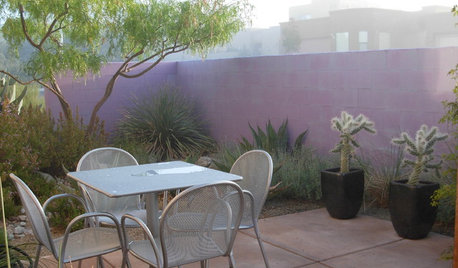
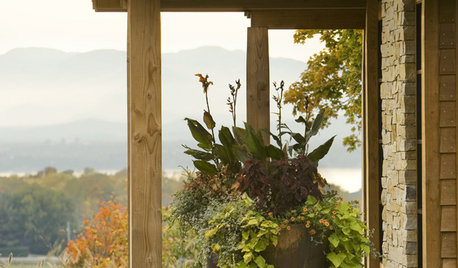

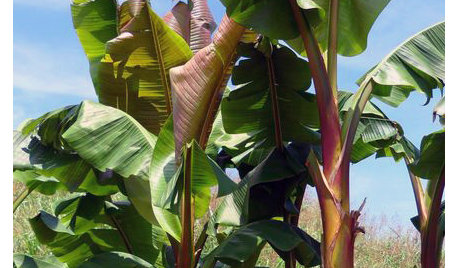
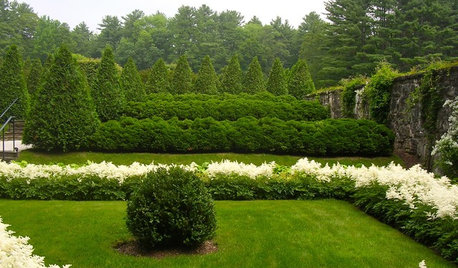
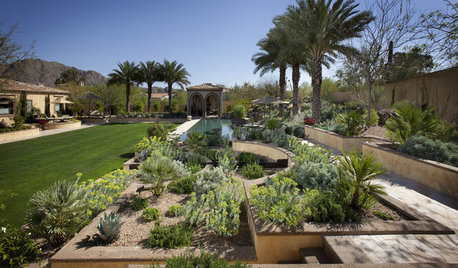
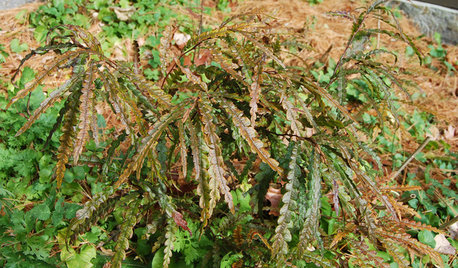








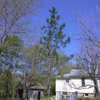
pineresin